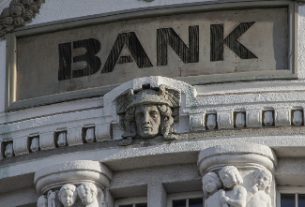Some of the highest-flying stocks of the past few years have been tech stocks. With the rise of cryptocurrencies and the creation of “disruptive” companies such as Uber and Airbnb, investors have been falling all over themselves in an attempt to cash in on the latest tech boom. Whether it’s investing in newer companies such as Tesla or established players such as Amazon and Apple, many investors believe that tech stocks will only continue to climb in the future. But they may be in for a disappointing surprise.
What we’re seeing today is the potential return of the dotcom bubble. Dotcom 2.0 could be even worse than the original dotcom bubble, although it won’t necessarily be caused by tech stocks. They’ll just be some of the first to lose their value. With talk of Uber, Airbnb, and others going public next year, it certainly has the feeling of a dotcom bubble. And just like during the dotcom bubble, you have numerous analysts and market watchers trying to claim that tech stocks aren’t in a bubble because their valuations aren’t nearly as extreme as during the height of the dotcom bubble.
While that may perhaps be true for certain technical indicators, such as the difference in valuations between stock market leaders and overall markets, that ignores the fact that stock markets overall are in a bubble. Thanks to the Federal Reserve’s loose monetary policy over the past decade, trillions of dollars of new money have entered the financial system. With companies able to issue debt at lower rates than ever, they have been able to fund stock buybacks over the past several years. Those buybacks have helped drive stock prices to record levels, enriching insiders who have cashed in their stock options as prices move ever upward.
That means that relative to the overall stock market, the FAANG stocks aren’t nearly as overvalued as top tech stocks were during the dotcom bubble. But because the market overall is overvalued, looking at that one specific indicator gives a misleading picture. So when you hear people say, “This time is different,” or, “We’re not in a bubble because stocks aren’t as overvalued as during the dotcom bubble,” you can almost be assured that we’re in a bubble.
Let’s not forget, either, that stock market losses were pretty severe during the dotcom bubble. The Dow Jones ended up losing over 30% of its value, the S&P 500 nearly 50% of its value, and the NASDAQ index nearly 80% of its value. The tech sector overall lost three-quarters of its value and it took years to recover. Then when the financial crisis hit stock indexes lost over half their value. Only in the past two-and-a-half years have markets finally been able to grow significantly beyond their pre-crisis levels.
Investors who are looking for long-term growth, and particularly those who are looking to save for retirement, need to be aware of the checkered history of stock markets over the past 20 years. The days of being able to sock money away in stocks and expect continuous upward growth are over. And now that stock markets have shown signs of weakness this year, another correction could be just around the corner.
That’s a sign that investors need to start thinking about how to protect their assets from a coming stock market crash. And that’s where gold can play a crucial role, as it has for centuries. Only gold can hold its value in the face of a stock market crash, as it did during the financial crisis. In fact, investors who held just 30% of their portfolio in gold saw their portfolios maintain 60% more value than investors who decided to retain all-stock portfolios. But timing is of the essence, as investors who wait too late to protect their assets with gold risk losing significant amounts of money if they move after a market downturn.
This article was originally posted on Goldco.



